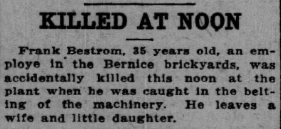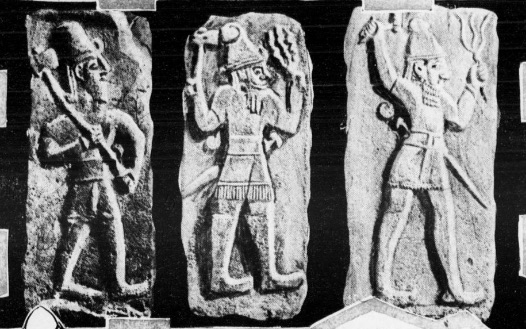
What was life like for the ancient Hittites? This article, published way back in 1904, explores the ancient civilization and life of the Hittites using what little they knew about the artifacts archaeologists were discovering.

Hittite
Inner Life of the Oldest Race of Men Known to History
Success has at last crowned scientific effort to solve the Hittite inscriptions recording the history of a civilization as old as that of the Babylonians and Assyrians and perhaps more ancient than that of any other people.
When this history in stone and metal was first unearthed years ago, Dr. Leopold Messerschmidt, Germany’s foremost archaeologist, was so impressed with its value that he immediately set himself the task of unraveling the inscriptions, as did other eminent delvers into stone and metal history. One by one his confreres laid aside the undertaking as too difficult, but this fact only served to inspire Dr. Messerschmidt to still more studious application. Ever since he has devoted his entire time and study to the interpreting of the series of remarkable monuments found buried in all the country through which the Assyrians and Babylonians are said to have warred with the Hittites, and as a result of the years of his scientific research he has published a new view of civilization 2,000 years before Christ as it was recorded by the Hittites.
Skeptical Regarding Old Testament
Scientists have long criticized the Old Testament for its treatment of the history of this people. While they are repeatedly mentioned as having inhabited Canaan before the Israelites, archaeologists have refused to accept the list of pre-Israelite population as a strictly historical document, arguing that records of events written long after they are said to have happened cannot be taken as equal in authority with Egyptian and Assyrian inscriptions. Aside from the probability of the solution of the Hittite inscriptions settling the question of their Semitic origin is the question of their invention of the Hamathite hieroglyphics, on which is based the syllabic system of writing. If the latter be demonstrated this wonderful nation is entitled to a position second to none other of the ancient east.
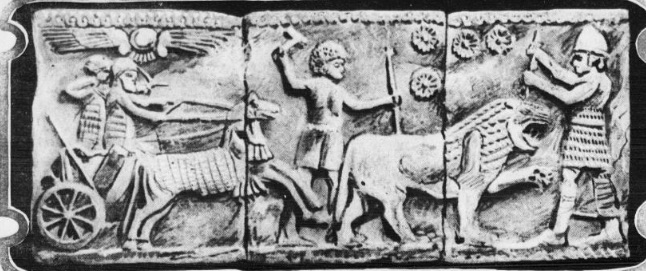
The Old Testament has been the source of knowledge of the Hittite customs, laws, and movements as a people, but it has been indefinite in great measure. It has been assumed that these people moved toward Syria and Mesopotamia about 2,000 years before Christ, wresting these countries from Babylonian occupation, and it is here that the monuments discovered within the last ten years are considered Hittite tracks in history. These people are supposed to have reached a considerable degree of civilization at least 3,000 years before Christ, and the archaeologist has been finding traces of it in many parts of Asia Minor.
Records Hitherto Undecipherable
Today these records of the Hittite people are the hardest of all records of all people to be deciphered by the archaeologist. The Egyptian and the Babylonian wrote of these neighbors and the writings have been established and translated to satisfy the scholar. But the things written by the Hittites are in stone and in metal, with characters so unlike those of contemporaneous people as to be almost undecipherable. Fifteen hundred years ago before the Christian era the language of the Babylonian was in use in recording peace treaties between the Babylonians and the Hittite peoples.
Delving into these records of buries peoples, the German orient committee has made some finds at Senjirli, in northern Syria. The English have worked near that place and at Jerabis and the French have dug in other sections. From the inscribed monuments that have been found all over Asia Minor the unintelligible character of the writings has made it impossible to associate them with any period in the evolution of the Hittites.
This writing is pictorial script, at variance with so much of the interpreted tongues of the world. There are human heads and the heads of animals. There are whole animals, such as birds and hares. Then there are hands and feet and claws of all kinds, together with images of objects, such as the sword and spear.
Progress of Education Shown
One differentiation in the inscriptions may indicate the comparative age of the work. Some of the monuments have figures executed in detail, and reasoning from the point of view that the writing was meant to be utilitarian rather than an exploiting of art, these forms are considered as antedating the more frequent examples of mere outlining. It is considered that the elaborate figures in relief were made at a time when writing was new and had to be made plain; the line inscriptions that are suggestive of the animal or of the face probably came later when there was necessity for shortening the time to be spent in writing.
Another feature of the line inscriptions thought to be newer is that certain marks probably not relating to the text are placed under the lines as points of punctuation. The face that appears in one of these manuscripts indicates the direction in which one should read. In some of the earlier examples of Hittite writing this face is in the upper right hand corner and in the later form it is in the upper left hand corner.
Thirty-five specimens of the larger inscriptions of these people have been found, though nearly every year they have been added to since 1870. Not for thirty-four years, however, has any progress been made by scholars in the deciphering of these records. It is conceded that at least 200 sign words have been used in the Hittite system and almost every new find adds to that number.
Some of these signs are believed to indicate a word or even words, while others are syllables, and still others represent merely a sound. The mingling of these words and syllable signs, when it is recognized that a single word may be written in two or more ways, is confusing.
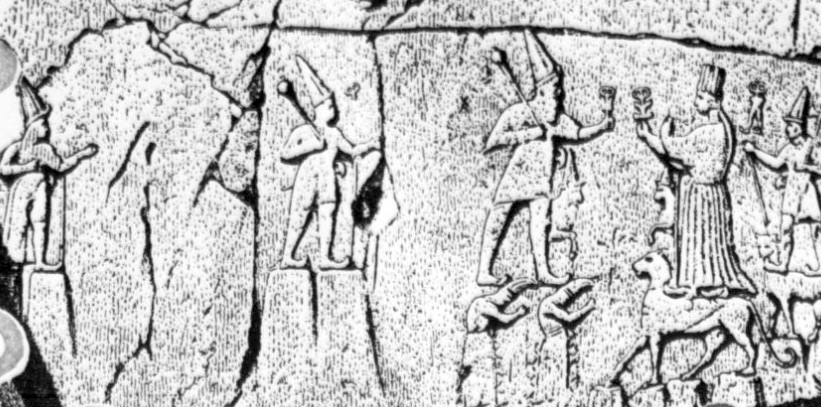
Contradict Egyptian Inscriptions
The personal appearance of the Hittites, as indicated on their monuments, is peculiar. Measurements of the skulls of the present inhabitants of western Asia have induced anthropologists to the belief that the Hittites, the modern Armenians, and a portion of the Jews are related. These modern heads are strikingly short, the hair and eyes are dark, and the noses large and beak shaped. On the Hittite monuments the nose is especially exaggerated after this form.
On the other hand, the Egyptians represented the Hittites as having oblong noses with slight curve, strongly receding foreheads, high cheek bones, beardless, and with short, round chins. The hair is long and thick and hangs to the shoulders in two large braids, that of the women and of the men being worn in the same style. On the Hittite monuments only one braided queue is shown for either sex.
The dress of the men of the Hittites consisted largely of a coat with sleeves reaching only to the elbows. The coat is closed around the neck and secured around the waist with a belt, the skirt of the coat dropping to the knees, where a fringe or border gives it a finish. The manner of clothing the legs cannot be determined from the reliefs.
The women shared with the men a dress of another pattern that was much worn by the men. This coat sleeve fell short of the elbows, it was closed about the neck, and the girdle held it in place at the hips. Its length was such as to hide the feet. Distinguishable from this dress is a long cloak that is worn over the short coat by personages of importance – perhaps kings and priests. The woman wearing the long coat frequently supplemented it with a loose covering that appears to have taken the place of a well.
Armies Depicted in Detail
The army of the Hittites was composed of infantry and of charioteers, cavalrymen rarely being shown in these sculptures. The chief arms were bows and arrows, while at the side may be a long lance, club, an ax with double edge, and swords of double edge and sickle shapes.
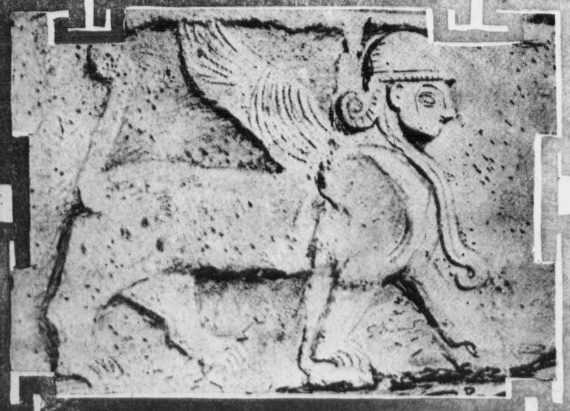
The war chariot is a low box, open in the rear, resting upon two wheels and drawn by two horses. On each side is a quiver, while at the rear are the lances. The Egyptian inscriptions have shown that each war chariot of the Hittites held the three warriors – charioteer, the shield bearer, and the bowman. The shield bearer is lacking in those pictures made by the Hittites, though in all probability because their own script represents hunting scenes and not scenes of war. The shield is of the form of the figure 8 or a mere quadrangle.
The lion, the deer, and the hare seem to have been the objects of the chase, and in this the war chariot was used by the hunters. The lion was chased by dogs, the god of the chase having the head of a lion and the body of a man. On a slab from a gate at Senjirli this god of the chase has a hare in one hand and in the other he holds a boomerang, which must have been known and used at that time. On his shoulder is a bird, evidently representing the falcon, that also must have been used in the chase.
Religious Observances Faithfully Recorded
Among the western Hittites the chief god was Tarku and among the eastern peoples it was Teshup, the storm god, who stands with a bundle of lightning forks in one hand while he swings the hammer in the other as the emblem of fertility. The storm god Teshup frequently is one of a trinity formed by himself and the gods Ardis and Chaldis. There are records everywhere of sacrifices offered up to one or all of these, but the significance of the occasions is not plain.
One of the most striking of all these illustrations of the divinities appears in a rectangular room carved out of the living rock near Boghazkou in Cappadocia. More than seventy figures are represented in relief, advancing one behind another on each of the side walls and approaching the central group in the end of the room opposite the entrance. Figures of men standing upon mountains, upon animals, birds, and human figures are supposed to represent divinities of the Hittites. In this group is a figure of the double headed eagle, now represented in the seal of Austria. This design was first a shield for the oriental sultans adopted in 1217 A.D., descending to the German emperors in 1345.
Development of Art Confusing
Hittite art is not easily measured in its development for the reason that both low grade and high grade works are found in conjunction, suggesting that the two expressions may have been simultaneously made. This might be accounted for in that some unimportant prince or personage had been unable to employ the best artists, while some powerful and rich ruler may have inspired the higher productions. The lion is most frequently represented in Hittite sculpture, the head and chest standing well out from the stone, with the rest of the body in only slight relief. The hunt is frequently pictured, but so far nothing has been unearthed as representative of war.
The Hittites were skillful at the working of metals and several remnants of silver objects have been uncovered, including a silver knob for a sword. Silver seals were executed in artistic fashion. Bronze objects have been found in the kingdom of Van and some of the statues in bronze have been found thinly covered with gold plates fastened to the bronze by edges bent into slits made to receive them.
Dr. Messerschmidt leaves the subject of the Hittite as one promising more work for the archaeologist than does the hieroglyphic writing of any other people. “It can be easily imagined,” he says, “that the desire to know more what these inscriptions contain becomes more and more lively.”
Source: Omaha daily bee. (Omaha [Neb.]), 04 Dec. 1904.

